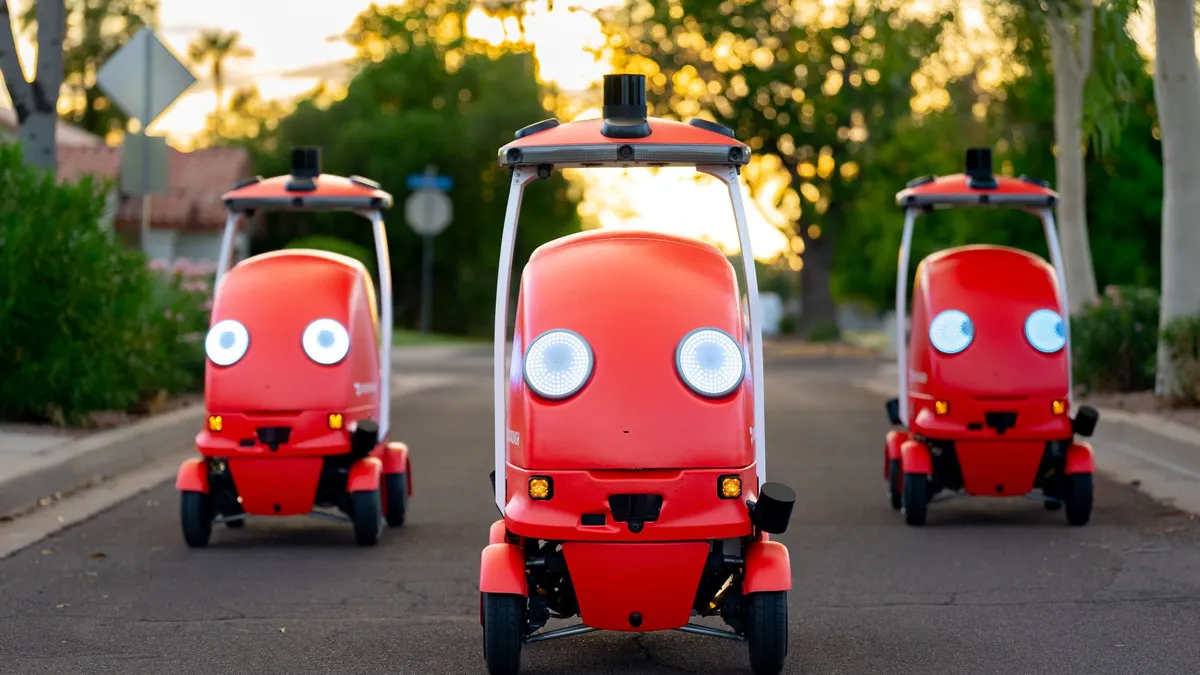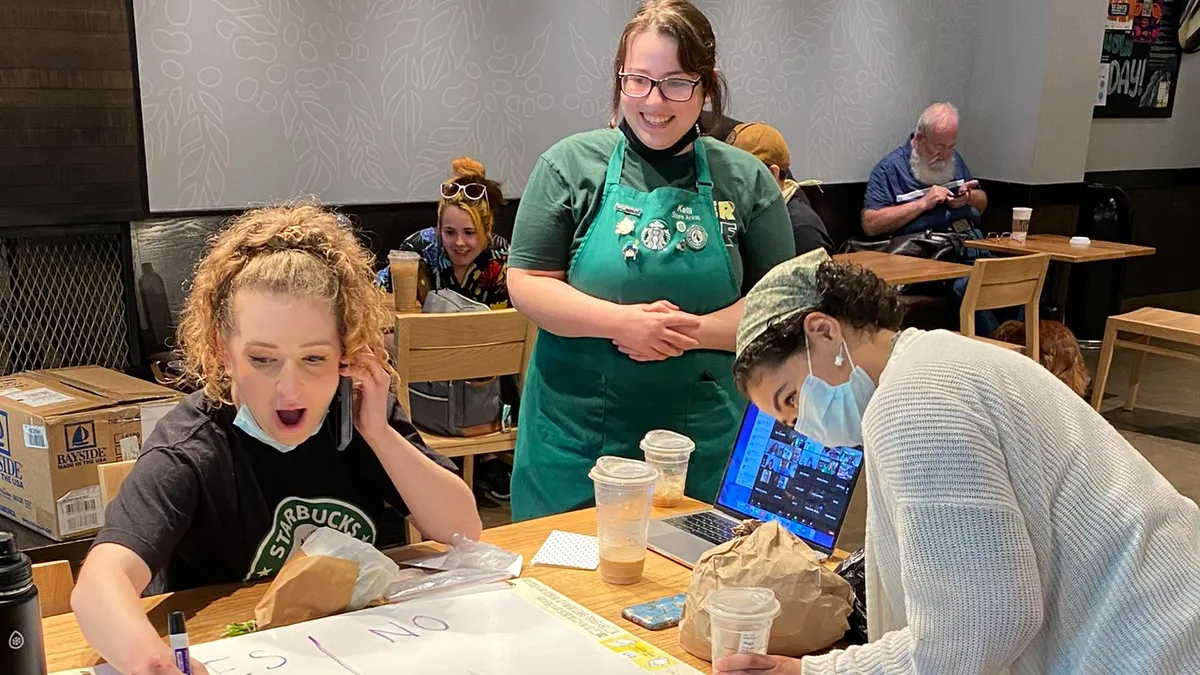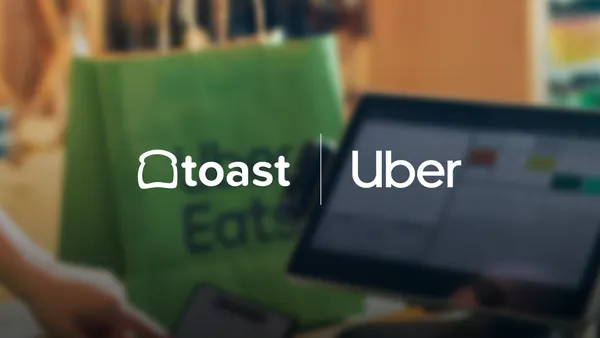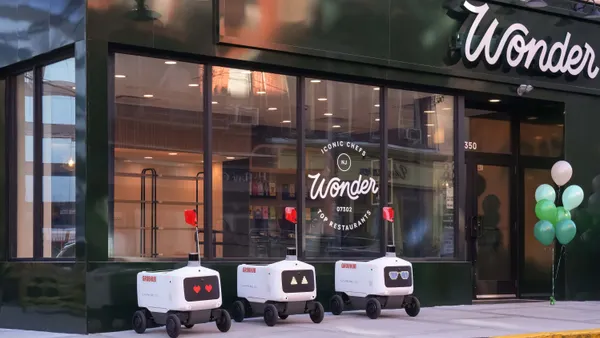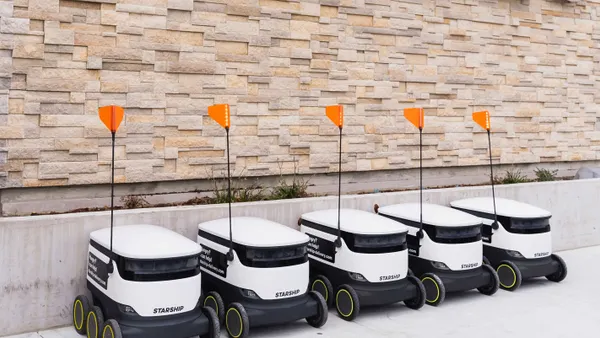A little red robot that’s one-tenth the size of a car and can travel up to 20 miles per hour could be the future of automated deliveries at DoorDash. Dot, an electric, street-friendly robot, said hello (yes it can talk) to a group of media representatives on Monday during DoorDash’s Dash Forward event in San Francisco.
Dot was part of DoorDash’s latest technology updates, which included an autonomous delivery platform and the rollout of Smart Scale, a tool restaurants can use to weigh bags to ensure order accuracy.
“After more than 10 billion deliveries, we have data on what works, what breaks and what scales,” Stanley Tang, co-founder and head of DoorDash Labs, said Monday during the Dash Forward event. “Automation in our business only matters when it can scale in the real world.”
Dot has already taken to the streets of Greater Phoenix, navigating through bike lanes, parking lots and sidewalks, bringing food and other merchant orders directly to consumers. DoorDash is rapidly adding robots to meet demand, while Dot is in early access and expects to reach 1.5 million people by the end of the year, a DoorDash spokesperson said in an email. Dot doesn’t have a specific mileage, but can last six to eight hours, the spokesperson said.
DoorDash tested Dot across millions of simulated and real world miles, including road hazards like closures, construction zones, trucks blocking bike lanes and more, Tang said.
“DoorDash merchants of any kind can begin Dot deliveries with no upfront cost to create a smarter, faster, autonomous delivery experience,” Tang said.
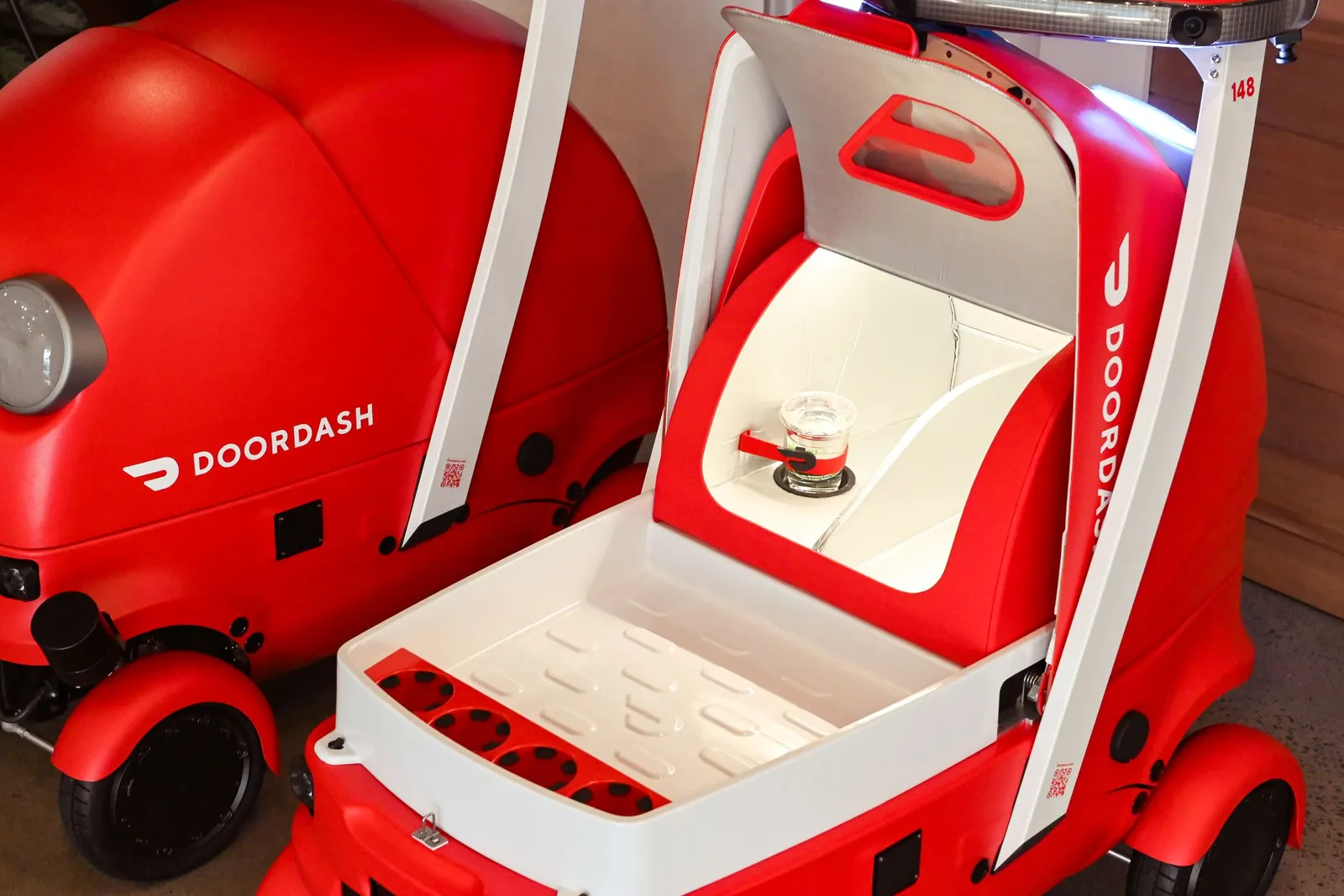
Why DoorDash built Dot
DoorDash decided to make its own autonomous robot because it saw a missed opportunity within existing autonomous delivery technology. Autonomous cars are meant for transporting passengers and can’t bring deliveries straight to a customer’s door; sidewalk robots can get closer to the customer and merchant, but are typically slower and can only travel short distances in urban environments, Tang said. Drones can travel further, but are more ideal for lightweight orders.
“This leaves an obvious gap for something that's faster than a sidewalk robot, but with a much smaller footprint [than a car] to remain maneuverable and really designed to serve that suburban market where most of our DoorDash deliveries happen,” Tang said.
Building a robot that fit in the autonomous delivery gap meant designing one with sufficient cargo capacity for typical DoorDash orders and that was scalable across markets, easy to transport, charge, repair and operate, Ashu Rege, vice president and head of autonomy at DoorDash Labs, said during the Dash Forward event.
At three feet wide, it can maneuver through most doors and fits on a sidewalk. Its size — one tenth the size of a passenger car — adds to its maneuverability and agility across different environments. But it is big enough to be seen, which improves its safety profile, Rege said. Dot’s interior is modular and can be adapted to different cargo needs, allowing for restaurant, grocery and c-store deliveries, he said.
Dot’s battery, which can “stay on the road all day long,” is separate from the unit allowing for the battery to charge on its own and be replaced, Rege said.
“All in all, this form factor allows the robot to operate in a completely different way than a standard autonomous vehicle,” Rege said.
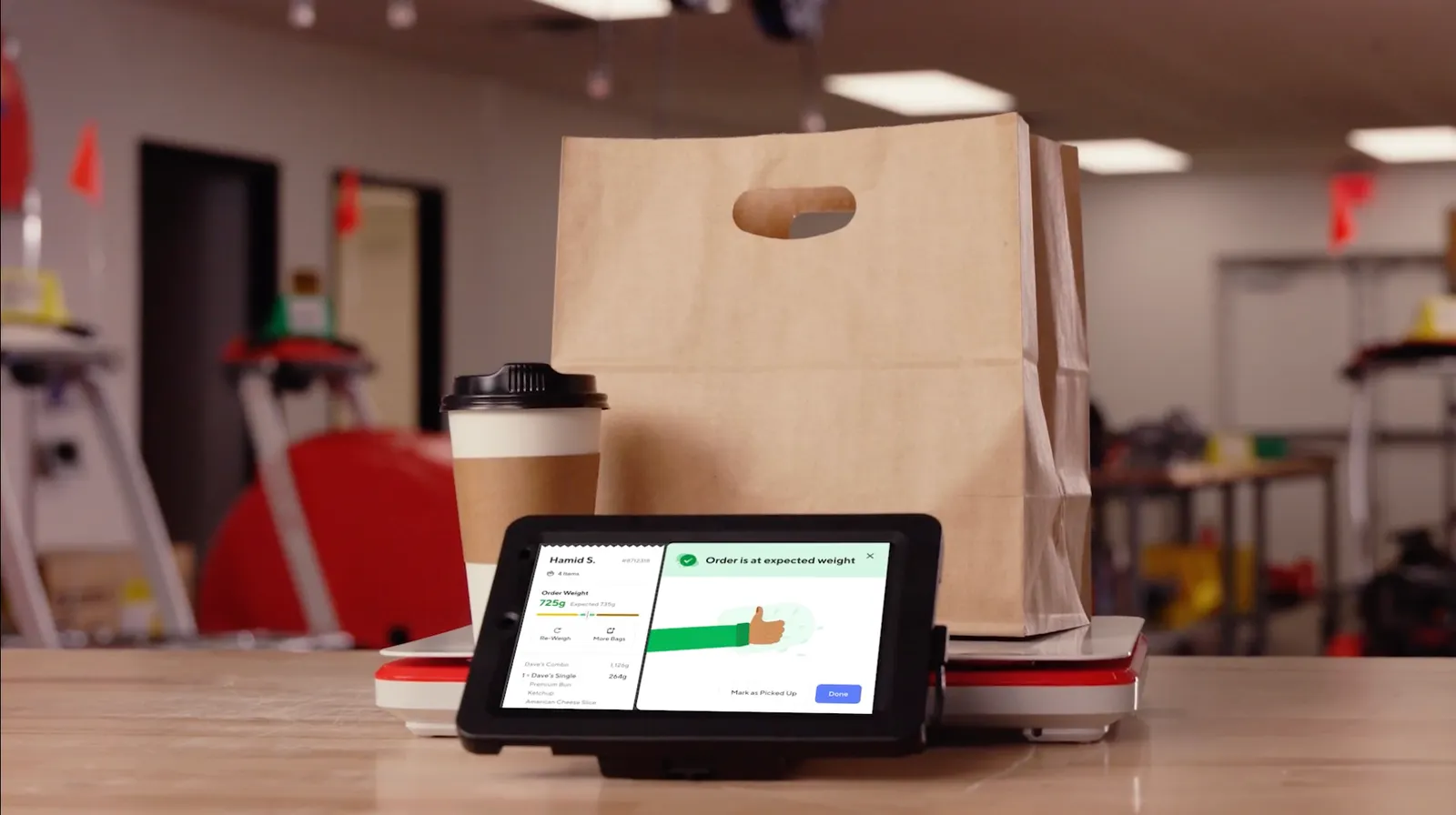
Using automation to improve order accuracy
Dot can also work with DoorDash’s new SmartScale, which combines a scale with intelligent predictive technology to ensure that orders aren’t missing items, DoorDash said in a press release. SmartScale is currently available in select restaurants and will be available on a broader scale in the coming months.
“If discrepancies are detected, staff receive real-time alerts, allowing them to resolve issues before the order leaves the kitchen — reducing missing or incorrect items, accelerating order handoff to Dashers, and helping ensure consumers receive exactly what they ordered,” DoorDash said in a statement. The company claims the technology reduced incidents of missing items by 30%.
SmartScale includes a touchscreen that can show merchants how they rank on SmartScale utilization and adoption across all stores. Merchants can also access an order manager through which operators can track orders, contact customers and delivery drivers, process refunds for out of stock items and make substitutions, DoorDash said.
Once an order is weighed, SmartScale can signal to a driver or robot when an order is ready for pickup. Weight verification from SmartScale can also determine if drones or robots like Dot are compatible with the order, the company said.
Finding the right delivery method
Dot and SmartScales are part of DoorDash’s new autonomous delivery platform, which is meant to match orders with the most efficient delivery method depending on speed, cost, location and experience, Tang said. That could be Wing’s drones, Coco Robotics’ sidewalk robots, human delivery workers or Dot, the company said in a press release.
The company is also experimenting with more machine learning mechanisms in the autonomous platform to predict demand, which could potentially unlock a “new frontier of growth,” DoorDash said.
“The goal is to ensure the most effective deployment method for every order, while supporting increased demand for local commerce,” Tang said. “With Dot expected to fill the gap for local trips, the whole network will run more efficiently as we scale. Our vision is hybrid human delivery and autonomy working together to expand access to local commerce for more people.”



